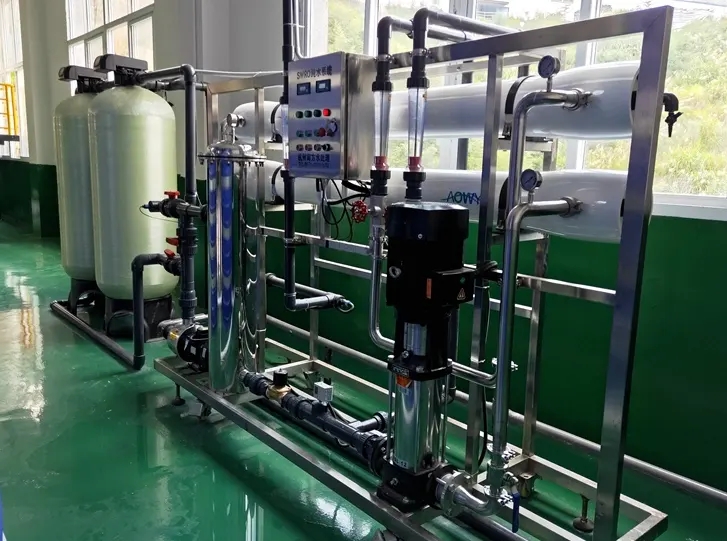In printing and dyeing factories, because of different water sources, water quality is also different. Generally, most printing and dyeing factories use natural surface water, groundwater or tap water.
Untreated natural water contains a variety of chemical substances, as calcium, magnesium, iron, sodium, carbonate, sulfate and chloride, which will have a great impact on textile dyeing.
The quality of textile printing and dyeing has certain requirements on water quality. Hard water will affect the bleaching effect and lead to uneven dyeing, bad hand feeling and yellowing of fabrics. But adding water softener will increase the dosage of caustic soda and other additives.
The calcium and magnesium, which are insoluble in water, will deposit on the fabric and form incrustation in alkali solution to attach to equipment hindering production. When the iron and manganese salt in water exceeds the standard, it is easy to produce rust spots and catalyze the oxidation of cotton fiber during boiling and scouring. When using oxidizing agent in bleaching process, iron and manganese salt will also catalyze the decomposition of bleaching agent.
When dyeing with reactive dyes, the influence of the hardness of water is not significant. But when dyeing nylon with acid dyes, the influence of the hardness of water is not significant. Too hard water will not only make the color and luster of the fabric poor, but the CI in the water also has a great influence on dyeing.
The suspended solids in hard water will influence the whiteness of bleaching. When dyeing cheese, it is easy to reduce the brightness of the inner and outer layers of the cheese yarn. High water pH value will affect the leveling property of fabrics in light color. That is because under alkali condition, the added dyes will be fixed, resulting in poor evenness and dyeing spots.
If the pH value of water is too high, it will make dyes hydrolyze in soaping process, which will cause poor reproducibility. And even in the softening process, it will cause the cloth pH exceed standard.
Excess iron ions will cause color spots, dyeing spots and bleak color shade. Excessive manganese ion is the main reason of yellowing of bleached fabrics.
Hard water will influence brightness of color and will lead to fouling of heat exchangers. It has high energy consumption. What’s more, calcium and magnesium ions and sodium carbonate will produce insoluble sediment, which will cause alkali spots.
Post time: Aug-29-2022


